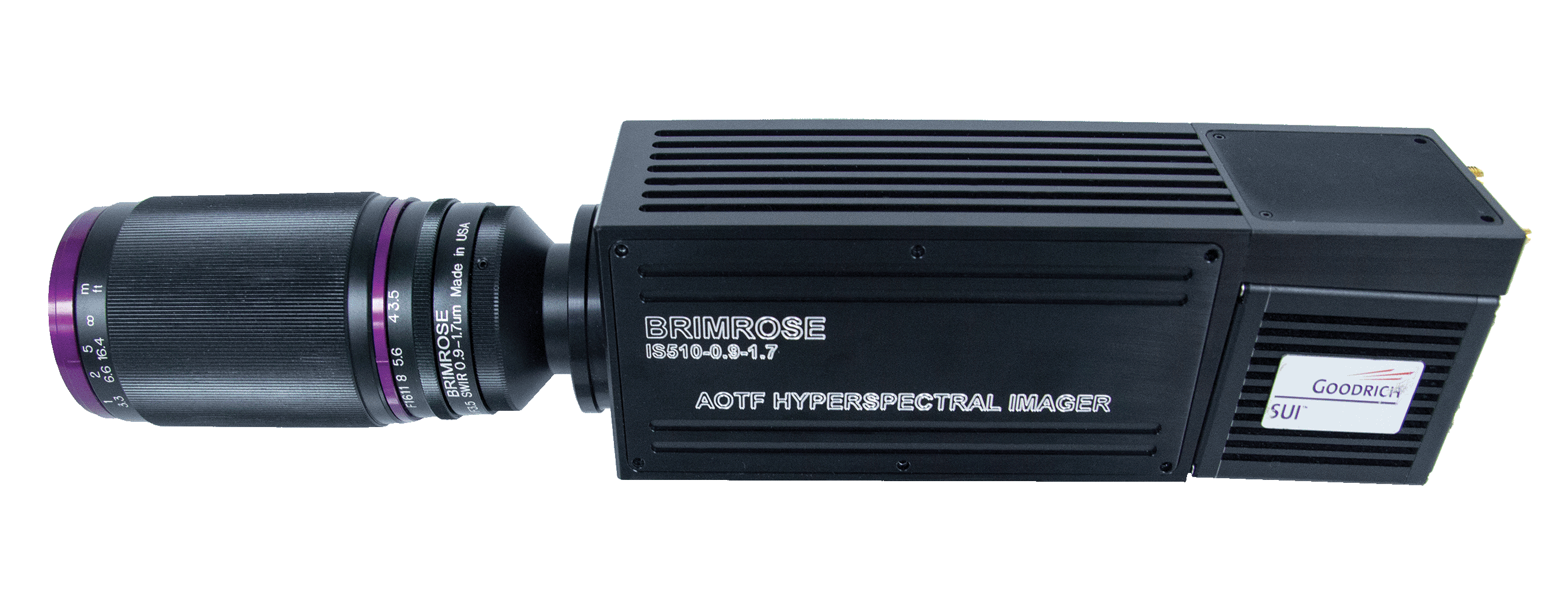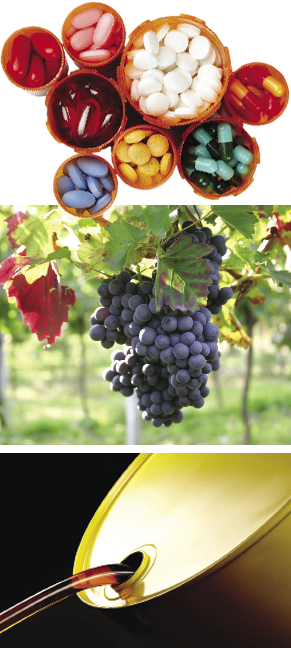
Space-Ready Spectrometer Offers Terrestrial Advantages
NASA Technology
In the 1990s, Jet Propulsion Laboratory (JPL) scientist Joy Crisp oversaw an effort to get a cutting-edge, ruggedized, lightweight spectrometer on a lander to be carried by the European Space Agency’s Rosetta comet orbiter. Conceived in 1985, the Rosetta probe launched in 2004 and finally encountered its target comet in August 2014.
Crisp’s spectrometer of choice, however, was not on board.
The device NASA had selected before ultimately pulling out of the mission was a near-infrared, acousto-optic tunable-filter (AOTF) spectrometer built by Brimrose Corporation of Sparks, Maryland, under two Small Business Innovation Research (SBIR) contracts with JPL, both awarded in 1992.
The type of spectrometer Brimrose and Crisp worked with uses light, primarily in the near-infrared and visible range, to analyze the chemical composition of a target surface or substance. Every substance has its own “spectral signature,” depending on the wavelengths it reflects, absorbs, or emits, and the spectrometer typically reads the signature of the transmitted, reflected or absorbed optical spectrum.
What made Brimrose’s device different from a standard spectrometer was the AOTF technology the company had recently begun developing and which was relatively new at the time. Normally, a spectrometer isolates different wavelengths of light by rotating a grating or prism, explains Sudhir Trivedi, director of research and development at the company, adding that such devices require a mechanical leg to recalibrate themselves. An acousto-optic filter, on the other hand, is a crystal that responds to different pitches of sound. “By changing the frequency of the sound, you can diffract the light into bands,” he says. “So the technology we have has no moving parts.”
“This was a nifty way of making it rugged,” says Crisp, who was the monitor for the two SBIR contracts. Aboard Rosetta’s Champollion lander, the imager would determine the chemical makeup of samples from the comet, which could have implications regarding the origins of the solar system and the universe. A Mars scientist and a geologist by training, though, Crisp was especially interested in determining whether an AOTF spectrometer would one day make an effective tool for analyzing the surface of the Red Planet.
But in 1996 the United States withdrew from Champollion, opting to invest that money instead in another imaging device, the Hubble Space Telescope, which still needed extensive corrections.
“We thought if we could demonstrate the AOTF spectrometer, people wouldn’t say, ‘Ah, it’s a new-fangled technology, why don’t you use something more tried and true?’” Crisp says. “If it has no flight heritage, you have to make an incredible case and show you’ve done lots of testing.”
Technology Transfer
The SBIR funding came at a time when the company was in the early stages of developing its AOTF technology, a pioneer in the field, says Jolanta Soos, Brimrose’s chief technology officer. “It let us develop our fabrication procedures for the AOTF and its electronics.”
NASA requirements also shaped the device in ways that would prove useful on Earth. It had to be able to withstand the extreme temperatures of space, as well as radiation exposure that would destroy most regular electronics, says Trivedi. It had to use a minimal amount of power.
“Whenever you have to send anything to space, weight is a great factor,” he adds, noting that, while the company’s earlier spectrometers had weighed two to five pounds, the designers got the version for NASA down to just over a pound by using lightweight metals and compact, light, digital electronics.
“All the harsh conditions of space—our systems we developed with NASA programs are capable of withstanding that,” Trivedi says.
Benefits
In the years since Brimrose’s partnership with JPL, the use of near-infrared spectrometers has exploded across numerous industries.
The pharmaceutical sector was one early adopter, using the devices to monitor ingredients in capsules and tablets for quality, uniformity, and compliance with regulations. The technology is used in agriculture to determine the quality of seeds and produce. Winemakers use it to analyze grape and wine composition. For oil companies, it can assess the properties of a batch of crude. In healthcare, it’s used to map brain activity by tracking hemoglobin concentrations, to investigate tumors and muscular functioning, and to image the retina. In materials science, spectroscopy can measure film thickness or investigate optical coatings for telecommunications. An exhaustive inventory of applications for the technology becomes unwieldy.
What have given Brimrose spectrometers an edge in this burgeoning field are the sturdiness, small size, light weight, and energy efficiency that the company learned to incorporate into its designs during its work with NASA. These qualities led to the success of early models like the Luminar 3050 mini-spectrometer (Spinoff 2003). But the company has continued to build on this technology, recently introducing its Luminar 4060 Free Space Analyzer and Luminar 5060 Hand-Held Analyzer, both of which represent major advances in size and efficiency while retaining Brimrose mainstays like the absence of moving parts and the ability to scan at 16,000 wavelengths per second.
Soos points out that the compact, lightweight designs make it possible, for example, to attach a device directly to a blender that’s mixing a pharmaceutical. “What our spectrometer is doing, in real time, is to measure the composition throughout the blend and stop it when it has the right blend,” she says, adding that units might also be attached to robotics or other machinery.
Trivedi notes that lightweight, energy-efficient models are ideal for troops in the field, who might use them in medical devices and other applications. He adds that energy efficiency is attractive to all customers, saving them money, which is what commercial spectroscopy comes down to. “All our spectroscopy customers purchase the instruments to save money,” Soos says. “Sometimes the cost of the instrument is paid back in a couple of months on the production line.”
Brimrose now offers 14 different AOTF spectrometers, which have been modernized over the last dozen years to include touchscreens, longer battery life, a conversion to the Linux operating system, better manufacturing, and purer materials, in addition to increased efficiency and portability, says David Chaffee, the company’s director of marketing communications.
The company has also adapted its rugged AOTF technology for other applications. In June 2014, it released a line of ultra-high-speed tunable light sources that use acousto-optic filters to narrow light down to a specific, adjustable wavelength. The technology is expected to find a market in the medical, microelectronics, and spectroscopy fields, among others.
And in 2011, a piece of Brimrose AOTF technology was finally put to the space test when one of its acousto-optic modulators was one of two such devices that rode to the International Space Station (ISS) on the Materials International Space Station Experiment-8. The goal of this test flight was to see if the device could survive liftoff and function in the unforgiving conditions the company had in mind when working with JPL more than 20 years ago, says Narasimha Prasad, electro-optical sensor technologist at Langley Research Center, who worked with the company to have the device sent to the ISS.
Prasad says Brimrose was one of the companies selected to supply an AOTF device for testing because the company is a leader in its field and one of only a handful of acousto-optic developers in existence. He explains, “Something has to be done to make electronically tunable filters available for space applications.”

The pharmaceutical industry was an early adopter of spectroscopy, which can monitor ingredients to ensure quality, uniformity, and compliance with regulations. Winemakers use it to test the composition of both their grapes and their end product, and spectroscopy lets petroleum companies analyze the crude they unearth and the oil they sell.

Brimrose’s work with NASA made the company’s solid-state, acousto-optic tunable-filter spectrometers rugged, small, and lightweight, able to withstand vibrations, radiation, and extreme temperatures. This one is about a foot long in its entirety.













